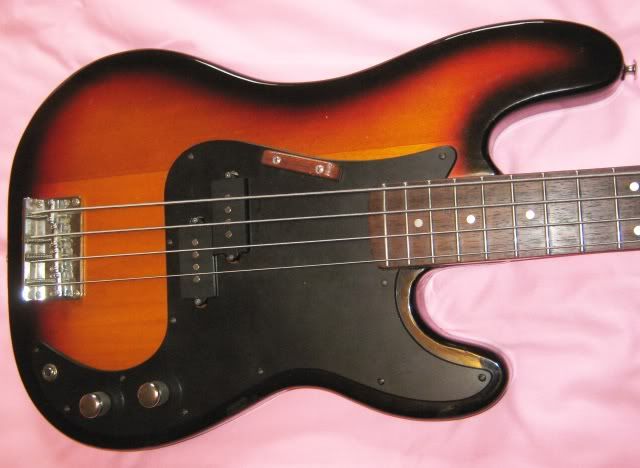I am neither a guitar technician, nor a luthier. However, I do know certain simple tasks such as restringing my guitars, adjusting its action and intonation adjustment. I learned to do them through trials and errors, watching others do them at guitar shops, etc...
Intonation is important for any fretted string instruments, let it be bass, guitar or even Chapman stick. To define it, it is an instrument's ability to produce an accurate note at any fret on the neck. Let's say the intonation is incorrect; even though your guitar produces an G note accurately when an open G-string (3th) is plucked, it may not produce the same note at its octave, the 12th fret of that G-string.
----------------------------------------------------------------------------------------------------------------------------------------------------------------
Here is just a very simple guide on how to adjust intonation:
What you will be needing are,
- A screwdriver
- A cable
- An electronic tuner
- It would be the best if your guitar is lying down on a horizontal plane, either on a table or on the floor. I do that one the bed (because I love my bed).
- Tune your guitar on its open strings first. That is the most important thing. If the strings are new and you just strung them on your guitar, stretch them and tune your guitar until the tuning stablises.
- Next, fret the note at 12th fret and check the tuning of the note there. If you are tuning your D-string, the 12th note on the D-string should produce a D as well, just an octave higher. If your tuner shows that it is flat (lower than a D), it means that the string length from the nut to the bridge is too long and needs to shorten it. Likewise, if it is sharp (higher than D), the string length is too short and needs to lengthen it. I'll assume that the octave D is flat in the following steps.
- To change the string length, you do so by moving the bridge saddles. Since the octave D is flat and you wish to shorten the length, you move the saddle forward.
- After shortening the string length, you will realised that the open D note will now be flat. This actually indicates that you are doing it right (If the note is sharped instead, it tells you that you are lengthening it when you should shorten it). So tune your open D string once again and check the tuning on the octave again until the two matches.

- To match the two notes exactly is a very difficult thing to do. Getting the accurate pitch at the octave is very hard. So this is what we normally do. As seen in the picture above, the tuning of the 12th note isn't an accurate D but very slightly sharped. But that is good enough. A human ear cannot tell a smaller difference like this. Even if it is a bit sharper than this, it is still acceptable as long as you don't hear the difference.
- One last thing to take note of is that when you fret the 12th fret, do not use too much force. If you press too hard, the tension of the string will change and you will find that the notes will get sharped. Just apply the same amount of pressure you use when you normally play your guitar. Only press the string hard enough to produce the note and not any harder than that.
----------------------------------------------------------------------------------------------------------------------------------------------------------------
It doesn't matter which string you start with. You can start from any string; from the 1st or the 6th. When you have done all these correctly, you will see your bridge saddles in such a position like this.
See the thunderbolt like pattern there? It doesn't matter if your bridge is a Tune-o-matic bridge like this or the usual strat-style bridge; you will still get this pattern. However, it may not always be true. See my 1st photo on this post? The saddles are actually aligned in a straight line. That is because of this:
The string holes at the bridge block aren't in a straight line. They are already in that 'thunderbolt-like pattern' (sorry, I can't think of a better word to explain it). You may also not see this pattern if you are not using a set of strings of the standard gauges, like heavier bottom, top, etc... But usually if you use a gauge 9 or 10 and the holes at the bridge block are aligned in a straight line, you will see the pattern.
And yes, this is intonation adjustment. It's very simple actually. But doing this can be time-consuming and requires patience especially if you don't frequently do this. You don't always need to check the intonation all the time actually but if you change the string gauge, you will definitely need to readjust it. I always make the point to check intonation every time a new set of strings come on my guitars, even if they are of the same gauge, material and brand. Doesn't hurt to do so, does it? =)
Some of us may already know all about this. Some of us don't. I hope this guide can be helpful to those who don't and so that they don't have to go to the guitar shop to do this (and save some cash).



















